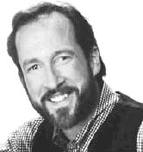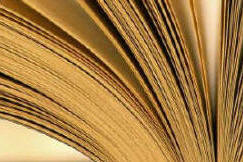Interview
with John Archambault:
Making Words Sing is a Magical Thing
Teaching the Legacy of Bill Martin, Jr. (1914-2004) and Beyond
Nile Stanley
 I
invited John to perform at my 10th annual poetry olio at the Chicago IRA. He
graciously accepted and mesmerized everyone by performing Barn Dance (1986)
from memory. It was inspiring to be in the presence of the author of the
classic Chicka Chicka Boom Boom (1989). I was thrilled to perform on the same
stage with Archambault who collaborated extensively for fifteen years with
Bill Martin Jr. the creator of the landmark literature based reading program,
the Sounds of Language (1974). Together Martin and Archambault enthralled huge
teacher audiences by singing and performing award winning children’s books,
such as Knots on a Counting Rope (1987) and The Ghost-Eye Tree (1986).
I
invited John to perform at my 10th annual poetry olio at the Chicago IRA. He
graciously accepted and mesmerized everyone by performing Barn Dance (1986)
from memory. It was inspiring to be in the presence of the author of the
classic Chicka Chicka Boom Boom (1989). I was thrilled to perform on the same
stage with Archambault who collaborated extensively for fifteen years with
Bill Martin Jr. the creator of the landmark literature based reading program,
the Sounds of Language (1974). Together Martin and Archambault enthralled huge
teacher audiences by singing and performing award winning children’s books,
such as Knots on a Counting Rope (1987) and The Ghost-Eye Tree (1986).
Bill Martin Jr. was one of America's favorite children's authors. People
like me of the baby boomer generation fondly remember waiting in two hour
lines to get Bill’s autograph. He wrote for almost 60 years. He was the author
of the classic text Brown Bear, Brown Bear, What Do you See? (1967), which was
illustrated by Eric Carle, as well as more than 300 other books for children.
I agree with Manning (2005), who wrote that Bill Martin, Jr taught us some of
the most important lessons we will ever learn about teaching reading.
Patterson (2002) noted Bill had a deep respect for teachers and wanted them to
foster in children the love of language. He believed the best instruction did
not come from following teacher’s manuals but it came from using the power of
the speaking voice and the impact in drama. Let’s keep the legacy alive and
observe the anniversary of his death on August 11, 2004 by having a Bill
Martin, Jr. Remembrance Day and celebrating language by telling stories,
performing poetry and singing songs.
John Archambault continued the legacy of his great teacher. He continued
the passion for bringing words to life by developing a series of Big Books
(shared reading) for Childcraft Education Corporation, incorporating musical
CDs with read-along and sing-along styles to help early readers develop
fluency and intuitive associations with print while making the experience fun,
affective, and effective. The following interview was conducted May 3, 2006 in
Chicago.
"We must harness the power of music to teach
reading. Melody and song carry words along so that no child gets left
behind."
John Archambault
Stanley: Tell us about the work you’re doing now.
Archambault: I am very excited about using the power of music
to support early literacy. According to Reading First about one out of two
children at the third grade are dysfluent. Also the research tells us that the
impoverished child who has not been read aloud to has only a vocabulary of 600
to 1,000 words. An affluent child who has been read to has a vocabulary ten
times that of 6,000 to 10,000 words. We have a two tier education system. Do
you really think we can bridge that gap with just leveled readers and direct
instruction? The outlook is bleak in a world made up of “mat, sat, fat, cat,
the world ain’t round, it’s gotta be {flat}.” I am concerned about the
disconnected reading instruction with no feeling, no emotion, no drama that
focuses on the staccato segmenting of sounds and individual words.
The answer seems to me to promote early fluency through music by tuning the
ear to the sounds and patterns of language. Music imprints the language. The
melody and song carries the words along so no one gets left behind As the poet
Langston Hughes said, “To make words sing is a magical thing.” The isolated
word does not have the premium so the emphasis should be on the phrasing of
the words. I tell kids there’s music in everything you read. Melody makes
explicit the flow of words and creates a river of language to float on.
Stanley: When you speak of using music to teach reading some
will respond, “Won’t the kids get too excited?”
Archambault: There is a power of music and magic that the
brain researchers are beginning to identify and quantify. I was speaking with
a neuroscientist who said there are specific language spots on the brain and
music is everywhere. It is like a rheostat that lights up the brain. We have
to harness that power. Lack of motivation in school is a problem. The risk is
more for having children disengaged than overly engaged. It’s a happy risk to
have children over excited. We must have motivation, desire and joy in our
classroom. I recently talked to a kindergarten teacher who had been teaching
for forty years and I asked, “How are you enjoying your teaching ?” She put it
to me this way, “We’re rammin {skills} and jammin, do’in a little of this and
a little of that, and a whole bunch of nothin.”
Teachers need to capitalize on the Mozart Effect (Campbell, 2001). When
teaching literacy through music, there is a twenty minute window of
opportunity for greater retention to take place. For direct instruction to be
effective it must come in the wake of the music and song. In that period, the
brain is literally lit. The power of music is quantifiable now through the MRI
and other brain scan procedures.
Stanley: I have been advocating the pattern song approach to
teaching literacy. I believe we should immerse children in singing traditional
songs, then teach them how to read, sing, and write new verses to accompany
familiar melodies. What do think about that approach?
Archambault: Yes, I agree the pattern song approach is a
powerful teaching tool. The teacher creates scaffolds for the children. They
take the language they may know only orally but with guidance learn to read it
and write it. For example, invite children to sing the familiar song, “This is
they way we brush our teeth, brush our teeth, so early in the morning” and
then they improvise their own verse. “This is the way we go to school, go to
school ….” However, teachers must be aware children are capable of handling
more sophisticated content (eg. “This is the way we learn about
photosynthesis, learn about photosynthesis …”). The children must evolve in
their songwriting to move away from just simpleton verses. The rhyme, rhythm,
and repletion of song imprints language. Music is the glue that makes print
stick in the mind.
Stanley: Bill Martin Jr. was an early advocate of using music
to teach reading. What has his legacy been, his contribution?
Archambault: I think in his Sounds of Language he speaks to
the very dilemma we are in today. It is not the isolated word that holds the
premium (e.g. bear, what, see, brown). It is how the words singularly come
together to create meaning in joyous and memorable ways (e.g. Brown Bear,
Brown Bear what do you see? I see a red bird looking at me?).
Let me tell you how he got the idea for Sounds of Language. I saw this
program on PBS about the poet Robert Frost. I called Bill and said, “You won’t
believe it Robert Frost is saying the same things about language as you!”
He laughed and replied, “I know, Frost said it best, “A sentence makes a
single sound on which the other sounds known as words are strung.”
So Bill was a real pioneer, ahead of his time. Now that the pendulum has
swung back away from artful instruction to focusing on the isolated word and
having children identify individual letters and segmenting words into sounds.
One of Bill’s major contributions then was underscoring for teachers that what
makes language memorable is how the words are clustered together. “Focus on
the clusters,” he would say and then break out into song for emphasis: Over
the river through the woods to grandmother’s house we go.
Stanley: I can just picture Bill Martin, Jr. , the chanting,
singing pied piper of poetry enthralling a huddled throng of wiggly kids .
Unfortunately, I see the happy magic trance broken by the standards coach who
warns, “What about the skills?” There seems to be a suspicion that if children
are having a good time they can’t be learning.
Archambault: Teachers really can have it both ways – a
balance of sounds and substance, inspiration and skills. Bill and I did a lot
of literacy training that also included Madeline Hunter, an advocate of direct
instruction. Interestingly, Sounds of Language came on the scene the same time
as Title I. He would say that legislative initiative that focused on the
remediation struggling readers provided him the financial cocoon that he could
spin.
Another one of his major contributions was giving struggling readers child
friendly text. He wanted to create texts that would give children the desire
to read them again and again. Now we are again disembodying language from
meaning, rhythm, and cadence. We are saying the only way to teach reading is
from the bottom up – letter, sound, itsy bitsy, monosyllabic! We are retracing
that journey and it leaves the critical pieces of joy and delight out. Bill
reminds us not to leave out the joy of language.
Stanley: Elaborate what you mean by you want to take Bill
Martin’s legacy a step further?
Archambault. Real literacy learning is always noisy. Death by
rigid skills instruction is silent. Direct instruction has an integral place
but it needs to follow in the wake of joyful engagement. I helped Bill revise
his Sounds of Language. He stuck to his guns and I respect that at a time when
the pendulum was swinging back to focus on isolated skills. He refused to have
a scope and sequence of skills. He said, “You have to let the language breathe
for kids. Going a step further is saying there is a way to bring joy of
language where kids want to own it, possess it, and write it. Have a power
over print. Bill created instant readers because he created enticing patterns
kids could be successful with. Sure it’s memory first and then the teacher has
to circle the wagons and say, “What sound does ‘b’ make in brown bear?”
Stanley: What were some of the most memorable times you had
with Bill Martin?
Archambault: The power of recitation, hearing language
performed. It was magic when he performed poems .He made language come alive.
Bill and I often performed for audiences of 10,000 teachers. Bill had much of
the actor in him. He would say that we were getting more work than Hollywood
actors. His first job was as a drama and speech teacher.
Stanley: How did you start working together? Was he easy to
work with?
Archambault: I was the editor of my college newspaper at
University of California at Riverside and Bill came there to present. I was
writing poetry and had read and really been inspired by Sounds of Language. He
asked me to read one of my poems, The Get You Tree and he liked it but had
suggestions for revision. We rewrote that poem together and it became the
Ghost Eyed Tree (1985). It won a Children’s Choice award and the publisher
offered us an eight book contract. When the student is ready the teacher will
appear.
“John you are the inspirationalist and I am the structuralist,” Bill would
always say. “You have the ideas, but I have the structure that will make your
words behave.” I have always had more ideas than I could carry through. For
example, when I was writing Chick-a Boom-Boom (1989), he would call everyday
and ask, “Have you finished it?” He was very much a perfectionist; therefore,
we did a lot of revision. You need a little conflict and friction though to
birth. He liked to work as a team to be able to bounce new ideas back and
forth. As a writer I feel my ear is the best editor. I am writing a novel, I
read it aloud, and I can let go of it when the words sound right.
Stanley: There have been great duos in show business like
Martin and Lewis, and Sonny and Cher. Sometimes rising stars crash and burn
and there is much anger. Did the parting of Martin and Archambault end
amicably, did you remain friends?
Archambault: Bill was the professor and I was the young
upstart. When we first met he said, “You are going to outgrow me.” Later, he
said, “Don’t you get tired of always being behind the “Great –I- Am ?” I felt
safe though. I wanted to be a writer since the third grade. Anything I wrote I
wanted to get that Bill Martin seal of approval. I am a perfectionist too. I
may sit on a manuscript for three years.
After 15 years working with Bill I felt too dependent and needed to move
on. We parted jovial ways. When I started my solo career he would attend my
workshops and say, “You’re your own man now and taking the Bill Martin legacy
a step further.”
Stanley: Who were his influences?
Archambault: He loved the American heritage of poets like
Vachel Lindsay and Ralph Waldo Emerson. Bill would often recite the great
poets. He was an ambassador for poetry like Woody Guthrie was for music and
songs of the common man. Like Walt Whitman, Bill would approach a laborer on
the street and say, “What are you thinking my friend?” Bill was a farm boy
from Kansas. He liked to use plain folks language.
Bill’s childhood was a big influence. He was a reluctant reader,
hyperactive and had a short attention span. It is a myth though that he didn’t
read till college. He always identified with the disenfranchised child who
wasn’t reading. “I want them to read in spite of us,“ he would say.
Stanley: How can a teacher get started using song to teach
reading?
Archambault: Everybody has a love of music. Use something
familiar and powerful. You don’t have to be a singer, just a participant. If
you’re anxious about singing, close the door. Don’t worry the kids will carry
along the melody. Play an online video (YouTube.com) of Louis Armstrong’s What
a Wonderful World. Play it again and everyone sing along. It’s ok to be a
little off key. It’s having spirit and joy that counts. Put the lyrics on an
experience chart. Tell the kids, “Here’s what this song look likes in print.
You can sing it with your eyes closed but you need to open them to read it.”
Then read it, discus it, use it as a springboard to teach skills, and write a
new verse. Let the literacy work be in the wake of a beautiful musical
experience.
References
Campbell, D.G. (2001). The Mozart effect. New York: Harper Trade.
Manning, M. (2005, January). Celebrations in reading and
writing/remembering Bill Martin, Jr. Teaching Pre K- 8,35(4),81-84.
Martin, B., Jr. (1967). Brown Bear, brown bear what do you see? New York:
Holt.
Martin, B., & Brogan, P. (1974). Sounds in the wind. Teacher’s ed. New
York: Holt, Rinehart, & Winston.
Martin, B., Jr., & Archambault, J. (1985). The ghost-eye tree. New York:
Holt
Martin, B., Jr., & Archambault, J. (1986). Barn dance. New York: Holt.
Martin, B., Jr., & Archambault, J. (1987). Knots on a counting rope. New
York: Holt.
Martin, B., Jr., & Archambault, J. (1989). Chicka chicka boom boom. New
York: Simon and Schuster.
Patterson, E. U. (2002). Profile: The professional legacy of Bill Martin,
Jr. Language Arts, 79(6), 515-521.


